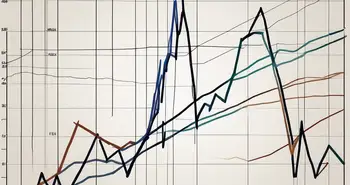Dry Powder in Finance: Why Smart Investors Keep Cash on Hand

In my journey through the labyrinth of finance, one term that often comes up, yet is frequently misunderstood, is “dry powder.” This guide aims to equip you with a solid understanding of dry powder finance, exploring its definition, significance, measurement, management, and future trends. Together, we will navigate this vital financial concept, ensuring you're well-prepared for whatever the financial world throws at you.
What is Dry Powder in Finance
At its core, “dry powder” refers to the capital that a firm has readily available to invest. This can include cash reserves, liquid assets, or easily accessible credit lines that can be mobilized quickly for investment opportunities. Essentially, dry powder is the money that financial institutions have on standby, waiting for favorable conditions to deploy. The significance of dry powder cannot be overstated, as it allows firms to act swiftly in volatile markets, seizing opportunities that may not be available to those who are less prepared.
The Origin of Dry Powder
The term “dry powder” has its roots in the world of military strategy. Historically, it referred to gunpowder that wasn't dampened and could be used for artillery. The analogy translates well into finance, where “dry powder” signifies a state of readiness for action—be it in acquisitions, market entries, or other investment scenarios. This readiness is crucial, as it allows firms to capitalize on sudden market shifts or emerging trends, much like a military unit poised to engage in battle at a moment's notice.
Dry Powder in the Context of Private Equity
Within private equity, dry powder has become especially crucial. Private equity firms often raise large funds from investors, and a portion of this capital remains unspent, purposely reserved to take advantage of prospective deals. The accumulation of dry powder in private equity indicates that firms are gearing up to make strategic investments, which can significantly influence the market landscape. In recent years, the amount of dry powder held by private equity firms has reached record levels, reflecting both the abundance of capital in the market and the competitive nature of deal-making. This situation creates a dynamic environment where firms must not only identify promising investments but also act decisively to secure them before their competitors do.
Moreover, the presence of substantial dry powder can lead to increased competition for high-quality assets, driving up valuations and altering the risk-return profile of investments. As firms deploy their dry powder, they often engage in bidding wars for attractive targets, which can result in inflated prices. This phenomenon underscores the importance of strategic thinking and due diligence, as firms must navigate the complexities of the market while ensuring that their investments align with long-term goals. The interplay between available dry powder and market conditions can thus shape the investment landscape, influencing trends and strategies across various sectors.
The Importance of Dry Powder in Financial Strategy
Understanding dry powder can fundamentally reshape your approach to financial strategy. It offers businesses a safety net and a competitive edge, allowing them to respond swiftly to market opportunities without hesitation.
Role in Mergers and Acquisitions
In mergers and acquisitions (M&A), having ready access to dry powder can make or break a deal. When a promising acquisition arises, organizations with robust dry powder reserves can act quickly, often outpacing competitors who might need to raise additional funds. Personally, I’ve seen clients secure excellent acquisitions purely because they had the capital at hand to act first.
Impact on Investment Decisions
The availability of dry powder also alters risk assessments and investment decision-making processes. When a firm has a solid amount of liquid capital, it may be more willing to invest in high-risk, high-reward ventures. This capability allows businesses to diversify their holdings and pursue innovative projects that they might otherwise shy away from.
Measuring and Managing Dry Powder
Fostering effective measures for dry powder management can lead to significant advantages. Understanding and tracking your dry powder levels should be a key component of any financial strategy.
Key Metrics for Dry Powder Analysis
- Cash Reserves: The amount of liquid assets available for immediate investment.
- Debt Capacity: The extent to which a firm can leverage additional debt to fund investments.
- Investment Horizon: Understanding the timeframe for which the dry powder will be utilized in investments.
Strategies for Effective Dry Powder Management
To optimize dry powder management, firms should consider the following strategies:
- Regular Assessment: Periodically evaluate the dry powder levels against strategic goals and market conditions.
- Establish Clear Guidelines: Develop investment criteria to help in making rapid decisions when opportunities arise.
- Maintain Flexibility: Ensure that the capital remains adaptable to changing market circumstances.
Risks and Challenges Associated with Dry Powder
While dry powder can be beneficial, it’s not without its pitfalls. Mismanagement or overreliance can lead to significant consequences.
Overcapitalization and its Implications
One of the primary risks associated with dry powder is overcapitalization. When firms accumulate too much dry powder without investing it wisely, they might face diminishing returns on their cash holdings and reduced growth potential.
Market Volatility and Dry Powder
Moreover, market volatility poses challenges for managing dry powder. Rapid shifts in the economic landscape can lead firms to hesitate, causing them to miss out on lucrative investment opportunities. It’s crucial to remain agile and ready to deploy capital even amidst uncertainty.
Future Trends in Dry Powder Finance
As financial landscapes evolve, so too does the concept of dry powder. Keeping an eye on emerging trends will give firms an edge.
Influence of Economic Cycles
The availability and strategy surrounding dry powder are often influenced by economic cycles. In times of economic growth, organizations may amass more dry powder, expecting lucrative investment opportunities to emerge. Conversely, during downturns, the strategy may shift to conserving capital.
Dry Powder in the Era of Digital Finance
Additionally, the rise of digital finance has transformed how we manage and allocate dry powder. Innovations like blockchain and decentralized finance (DeFi) have created new pathways for investment and liquidity, enabling firms to deploy their capital in unprecedented ways.
FAQ about Dry Powder Finance
What is dry powder?
Dry powder refers to liquid capital available for investment, ready to be deployed when opportunities arise.
Why is dry powder important?
It allows firms to act swiftly in the financial markets, particularly in contexts such as mergers and acquisitions.
What are the risks of having too much dry powder?
Overcapitalization can lead to reduced growth potential and missed investment opportunities due to market volatility.
How can companies manage dry powder effectively?
Through regular assessments, clear investment guidelines, and maintaining flexibility in their strategy.
In conclusion, understanding dry powder finance is essential for anyone involved in investment or financial strategy. By mastering this concept, you can position yourself—and your organization—for success in the ever-changing financial arena.
As you navigate the financial markets with the knowledge of dry powder finance, consider taking your strategy to the next level with Morpher. Our revolutionary trading platform leverages blockchain technology to offer zero fees, infinite liquidity, and a unique trading experience across various asset classes. Whether you're looking to invest in stocks, cryptocurrencies, or even niche markets like NFTs, Morpher empowers you with fractional investing, short selling, and up to 10x leverage. Embrace the future of trading with safety and control, and join a community that's democratizing investing worldwide. Sign Up and Get Your Free Sign Up Bonus today, and elevate your investment game with Morpher.

Disclaimer: All investments involve risk, and the past performance of a security, industry, sector, market, financial product, trading strategy, or individual’s trading does not guarantee future results or returns. Investors are fully responsible for any investment decisions they make. Such decisions should be based solely on an evaluation of their financial circumstances, investment objectives, risk tolerance, and liquidity needs. This post does not constitute investment advice.

Painless trading for everyone
Hundreds of markets all in one place - Apple, Bitcoin, Gold, Watches, NFTs, Sneakers and so much more.

Painless trading for everyone
Hundreds of markets all in one place - Apple, Bitcoin, Gold, Watches, NFTs, Sneakers and so much more.









